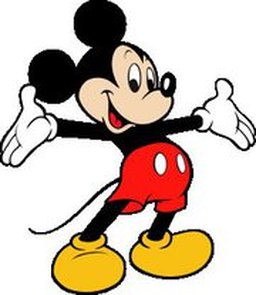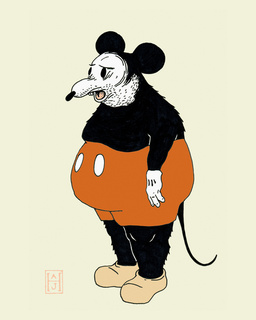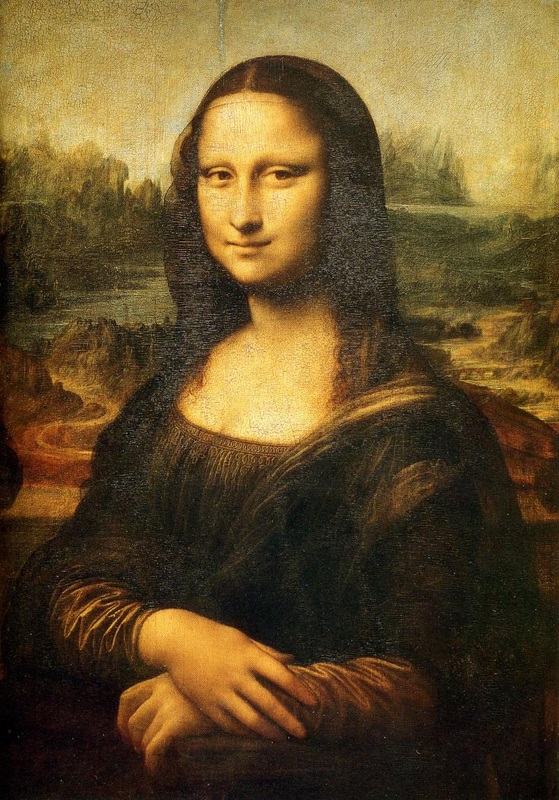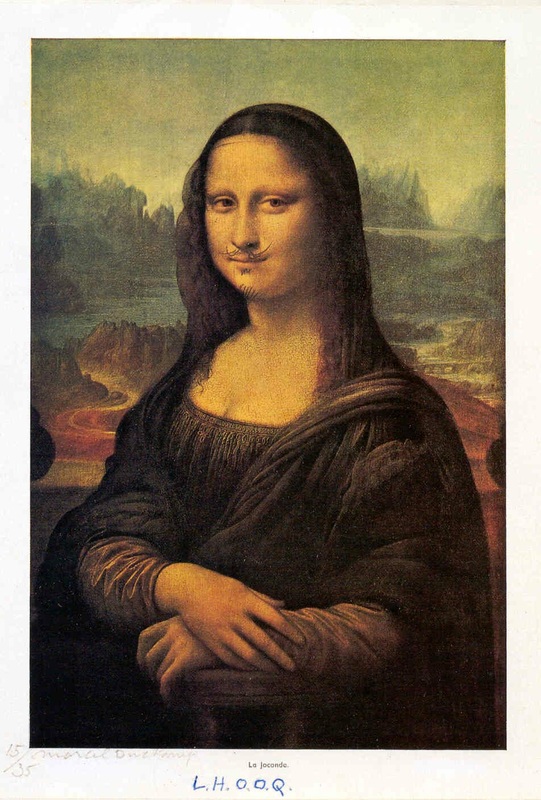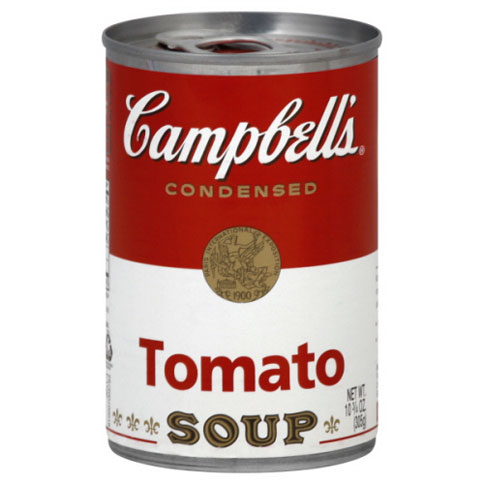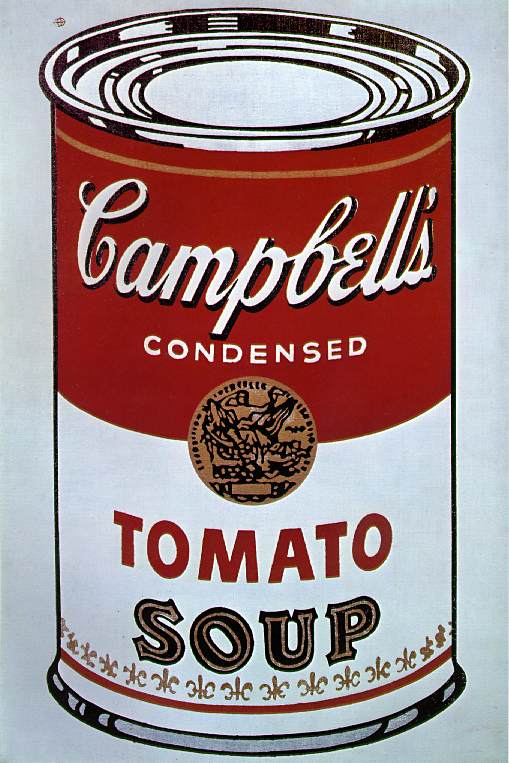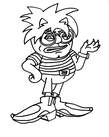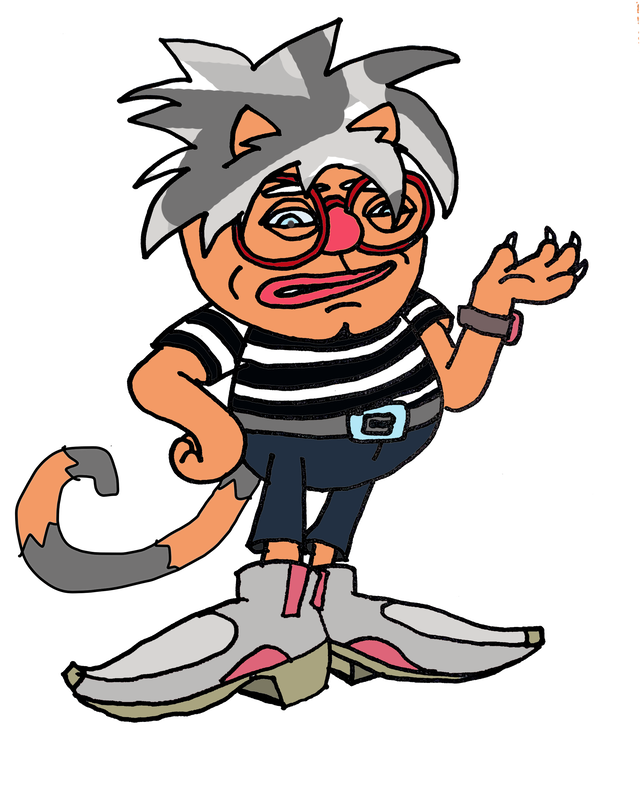Derivative Characters
Essential Question:
Can you create a character that transcends the original and can stand on its own as a new original?
Can you create a character that transcends the original and can stand on its own as a new original?
Objective:
Each student should choose an existing artwork and transform it to become an “original”, by manipulating the image to a point where it is no longer considered a copy of an original artwork, but a derivative of the original. The challenge will be to transform an artwork enough so that you can take ownership of the image. The key will be to use the original artwork as inspiration, as a guide to help you produce something that is legitimately your own. This is achieved through a visual, conceptual or contextual manipulation.
Each student should choose an existing artwork and transform it to become an “original”, by manipulating the image to a point where it is no longer considered a copy of an original artwork, but a derivative of the original. The challenge will be to transform an artwork enough so that you can take ownership of the image. The key will be to use the original artwork as inspiration, as a guide to help you produce something that is legitimately your own. This is achieved through a visual, conceptual or contextual manipulation.
From Mickey Mouse to Mickey Rat
This slide show is a sampling of how to deviate from the original and create unique work.
How the artist, "Kaws", does it....
Does he really go far enough to make his work original...?
Mona Lisa: da Vinci vs. Duchamp20th century French artist, Marcel Duchamp drew a mustache on a poster of the Mona Lisa and it was considered to be a parody of the original, thus making it original.
|
Campbell's Soup vs. Andy WarholPop artist, Andy Warhol painted the image of Campbell's soup cans. It is not a can of soup, it is a painting of a can of soup....(see Pipe by Rene Magritte)
|
Derivative Character Mash-Up
Garfield / Warhol Mash-Up
Use an animated character as the basis while giving it character traits/features of Andy Warhol.
Use an animated character as the basis while giving it character traits/features of Andy Warhol.
Plagiarism and the history of art:
Through all of the history of literature and of the arts in general, works of art are for a large part repetitions of the tradition; to the entire history of artistic creativity belong plagiarism, literary theft, appropriation, incorporation, retelling, rewriting, recapitulation, revision, reprise, thematic variation, ironic retake, parody, imitation, stylistic theft, pastiches, collages, and deliberate assemblages. There is no rigorous and precise distinction between practices like imitation, stylistic plagiarism, copy, replica and forgery. These appropriation procedures are the main axis of a literate culture, in which the tradition of the canonic past is being constantly rewritten.
These appropriation procedures, vital to the whole history of art, have gained more and more importance since the beginning of the 20th century, with the boom of the modernist and postmodern movements; in modernist and postmodernist art, appropriation has been heightened as the central and representative device.
There are certain terms we must understand in order to follow the readings and understand the implications and legalities of creating original artwork:
Through all of the history of literature and of the arts in general, works of art are for a large part repetitions of the tradition; to the entire history of artistic creativity belong plagiarism, literary theft, appropriation, incorporation, retelling, rewriting, recapitulation, revision, reprise, thematic variation, ironic retake, parody, imitation, stylistic theft, pastiches, collages, and deliberate assemblages. There is no rigorous and precise distinction between practices like imitation, stylistic plagiarism, copy, replica and forgery. These appropriation procedures are the main axis of a literate culture, in which the tradition of the canonic past is being constantly rewritten.
These appropriation procedures, vital to the whole history of art, have gained more and more importance since the beginning of the 20th century, with the boom of the modernist and postmodern movements; in modernist and postmodernist art, appropriation has been heightened as the central and representative device.
There are certain terms we must understand in order to follow the readings and understand the implications and legalities of creating original artwork:
Copyright - The U.S. Copyright Act, is Federal legislation enacted by Congress under its Constitutional grant of authority to protect the writings of authors. The Copyright Act now reaches architectural design, software, the graphic arts, motion pictures, and sound recordings. It includes all works of authorship fixed in a tangible medium of expression.
Derivative work - A typical example of a derivative work received for registration in the Copyright Office is one that is primarily a new work but incorporates some previously published material. This previously published material makes the work a derivative work under the copyright law. To be copyrightable, a derivative work must be different enough from the original to be regarded as a "new work" or must contain a substantial amount of new material. Making minor changes or additions of little substance to a preexisting work will not qualify the work as a new version for copyright purposes. The new material must be original and copyrightable in itself. Titles, short phrases, and format, for example, are not copyrightable.
Appropriation- In the arts is the use of pre-existing objects or images with little or no transformation applied to them. Appropriation can be understood as "the use of borrowed elements in the creation of a new work." In the visual arts, to appropriate means to properly adopt, borrow, recycle or sample aspects (or the entire form) of man-made visual culture.
Fair Use - Fair use is a limitation and exception to the exclusive right granted by copyright law to the author of a creative work. In United States copyright law, fair use is a doctrine that permits limited use of copyrighted material without acquiring permission from the rights holders.
Plagiarism - Plagiarism is defined in dictionaries as the "wrongful appropriation," "close imitation," or "purloining and publication" of another author's "language, thoughts, ideas, or expressions," and the representation of them as one's own original work, but the notion remains problematic with nebulous boundaries. The arts have resisted in their long-established tradition of copying as a fundamental practice of the creative process, but with the boom of the modernist and postmodern movements in the 20th century, this practice has been heightened as the central and representative artistic device. Plagiarism remains tolerated by 21st century artists.
Plagiarism is not a crime per se but is disapproved more on the grounds of moral offense, and cases of plagiarism can involve liability for copyright infringement.
Pastiche - A pastiche is a work of art, literature, film, music or architecture that openly imitates the work of a previous artist, sometimes with the intent of satire. Alternately, a pastiche may be a hodge-podge of parts derived from the original work of others. As the Oxford English Dictionary puts it, a pastiche in this sense is "a medley of various ingredients; a jumble." This meaning accords with etymology: pastiche is a French word, coming from the Italian term pasticcio, referring to a kind of pie made of many different ingredients.
Derivative work - A typical example of a derivative work received for registration in the Copyright Office is one that is primarily a new work but incorporates some previously published material. This previously published material makes the work a derivative work under the copyright law. To be copyrightable, a derivative work must be different enough from the original to be regarded as a "new work" or must contain a substantial amount of new material. Making minor changes or additions of little substance to a preexisting work will not qualify the work as a new version for copyright purposes. The new material must be original and copyrightable in itself. Titles, short phrases, and format, for example, are not copyrightable.
Appropriation- In the arts is the use of pre-existing objects or images with little or no transformation applied to them. Appropriation can be understood as "the use of borrowed elements in the creation of a new work." In the visual arts, to appropriate means to properly adopt, borrow, recycle or sample aspects (or the entire form) of man-made visual culture.
Fair Use - Fair use is a limitation and exception to the exclusive right granted by copyright law to the author of a creative work. In United States copyright law, fair use is a doctrine that permits limited use of copyrighted material without acquiring permission from the rights holders.
Plagiarism - Plagiarism is defined in dictionaries as the "wrongful appropriation," "close imitation," or "purloining and publication" of another author's "language, thoughts, ideas, or expressions," and the representation of them as one's own original work, but the notion remains problematic with nebulous boundaries. The arts have resisted in their long-established tradition of copying as a fundamental practice of the creative process, but with the boom of the modernist and postmodern movements in the 20th century, this practice has been heightened as the central and representative artistic device. Plagiarism remains tolerated by 21st century artists.
Plagiarism is not a crime per se but is disapproved more on the grounds of moral offense, and cases of plagiarism can involve liability for copyright infringement.
Pastiche - A pastiche is a work of art, literature, film, music or architecture that openly imitates the work of a previous artist, sometimes with the intent of satire. Alternately, a pastiche may be a hodge-podge of parts derived from the original work of others. As the Oxford English Dictionary puts it, a pastiche in this sense is "a medley of various ingredients; a jumble." This meaning accords with etymology: pastiche is a French word, coming from the Italian term pasticcio, referring to a kind of pie made of many different ingredients.

